Did you know that a mere 5% increase in customer retention can boost profits by up to 95%? In the competitive world of SaaS, ensuring client satisfaction isn’t just a nicety—it’s a necessity. But how do you achieve that?
In this article, we delve deep into +18 proven strategies that have been meticulously researched and tested to skyrocket client satisfaction and drastically reduce churn. These aren’t just any strategies; these are growth tactics specifically tailored for Customer Support Specialists.
By the end of this read, you’ll have a comprehensive understanding of how to elevate your customer support game, ensuring that your clients remain loyal and satisfied. From harnessing the power of AI-driven support to understanding the nuances of empathetic communication, we’ve got you covered.
Expect insights on real-time support optimization, feedback loop creation, and much more. Let’s dive in!
#1 Add a Request Callback Widget
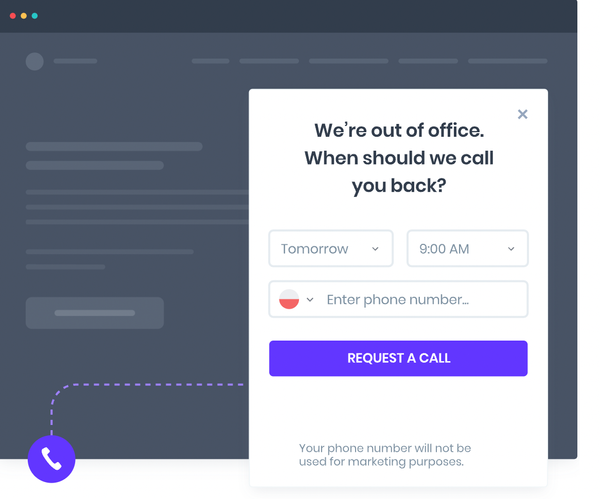
➔ A callback widget allows visitors to request a phone call from your team, providing an immediate response mechanism.
➔ It will also allow you to speak with your customer by phone or video call which is a better way to build relationships.
➔ This tool can capture leads at the peak of their interest.
➔ It eliminates the waiting time for visitors, offering them a direct line to get their queries addressed.
➔ Such widgets can be especially beneficial for B2B SaaS companies where potential customers might have specific questions before making a decision.
#2 Add/Invest in product-led growth
- Can you offer a self-service onboarding?
- Decrease the time-to-value (aha-moment)
- Measure product usage and offer product-enabled sales activities
- Optimize conversion from active users to paying customers (e.g. opt-in, checkout, pricing, etc.)
- Retention Strategy
- How do you decrease churn (Customer Success, Training, Customer touchpoints, etc)
- How do increase revenue over time (upsell/cross-selling strategy, Pricing)
- What viral features can you add to your product to create a growth flywheel? Learn more about it here
#3 Charge for Priority customer support
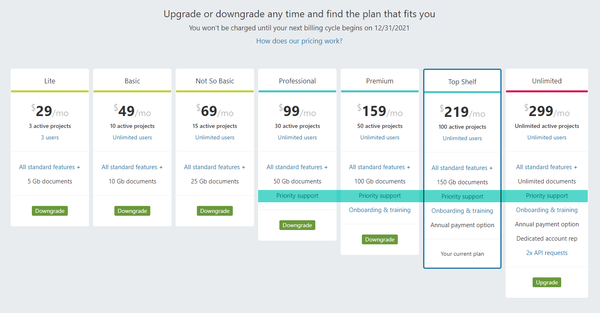
Offer premium product support to your high-value customers.
Prioritizing support for these customers ensures their satisfaction and promotes positive word-of-mouth.
- 👉 Consider implementing dedicated support channels or faster response times for these customers.
- 👉 Regularly review feedback from these customers to further enhance their experience and address any recurring issues.
Image credits: myintervals.com
#4 Conduct Exit Interviews
If a customer is leaving, so be it. The goal of this interview is not to get him back, but rather to have a word with them before they walk away.
Before they exit, seize the opportunity for a final conversation.
- ➔ A video call is fantastic
- ➔ A phone call is great
- ➔ A chat/email is good
Even if you let them rant, you will learn from their reasons for leaving and apply this knowledge to improve your product and offer.
Credits: in.linkedin.com/in/rewarivishal
#5 Customer Segmentation in Onboarding
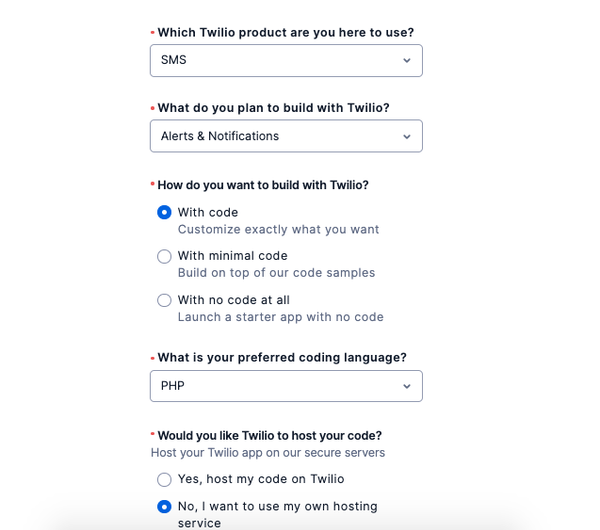
Integrate viral features into your product to encourage users to share:
- Network Effects: The product’s value increases with more users. Examples include social media platforms like LinkedIn, chat apps like WhatsApp, and peer-to-peer payment systems like PayPal. If you a platform or marketplace you can leverage network effects.
- Value Virality: Users promote your product by merely using it. Examples include e-signature tools like Docusign, collaboration boards like Miro, and email services like Mailchimp, often combined with a ‘powered by’ badge.
- Exposure Virality: Users showcase your product to elevate their social status. Examples include NFTs like Cryptopunks and educational badges from platforms like Hubspot Academy.
- Invites & Referrals: Users are incentivized to invite others to your product, often through rewards like discount codes or free usage. Examples include Dropbox offering free storage and Uber providing free rides for referrals.
#6 Do founder feedback calls
Founder Calls are direct interactions between the company’s founder or co-founder and the customers, aiming to gather feedback and insights.
This strategy fosters deeper relationships, enhances customer engagement, and refines the product/service based on genuine feedback.
Such calls demonstrate to customers that their opinions are valued, reinforcing their loyalty and connection to the brand.
💡 Break your call-structure by sections: product usability, feature requests, and potential improvements.
# 7 Downsell on cancellation
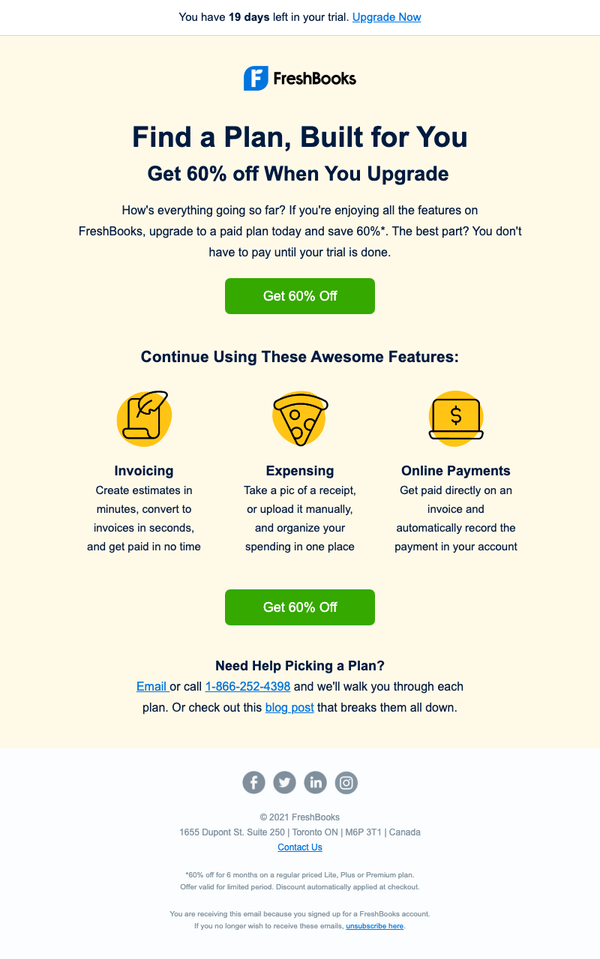
When a user intends to cancel their subscription, consider offering a downsell option.
The downsell can be a more affordable version of your product or service, retaining the customer at a lower price point.
For instance, if a user is part of a $97/month membership program and wishes to cancel, offer a ‘lite’ version for $47/month.
👉 This approach can retain price-conscious users and prevent complete churn, ensuring some level of continued revenue.
#8 Email Sequence – Churn
Survey your churn customers. Once they cancel, ask them why.
Send automated emails with a quick survey.
Use dropdown fields with churn reasons + open text field for further info about why they cancel (once a month, analyze the churn reasons).
Based on the churn reason, personalize your follow-up:
- too expensive —> one-off discount
- too complex —> Customer Success call / Free Training
- missing feature —> share product roadmap
Even offer to jump on a call with them. For important customers, call them. During a call, you should ask:
- – Why did you initially start using [Product]?
- – Why have you stopped using [Product]?
- – Is there something that could have been done differently?
- – How are you going to replace [Product]?
#9 Experiment on your own: 7-days free trials increase sales and retention
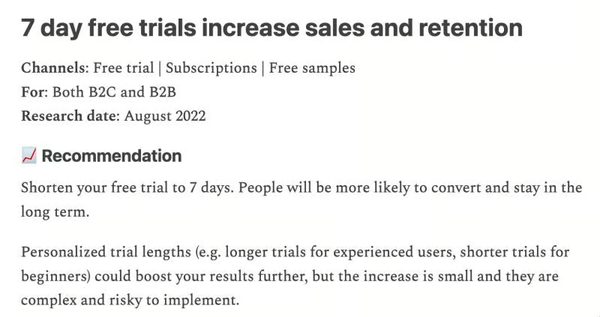
📈 Scientific research: 7 days free trials (vs 30 days), led to:
- → 5.6% more conversions
- → 6.4% better retention (over 2 years)
- → 7.9% higher revenue
🧠 Why?
- → Trials work best if people use them intensively.
- → Shorter trials create an urgency effect.
- → So people use them more.
- → And are more likely to learn about the product and buy.
Data: Thomas Mckinlay, who shares mind-blowing marketing recommendations based on scientific research.
#10 Gamify your free trials
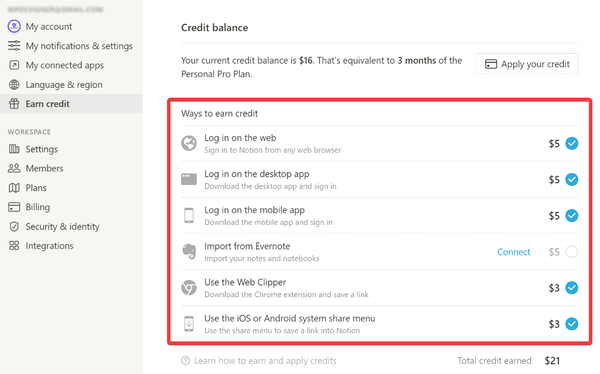
Gamification can also work for B2B SaaS products.
Notion offers credits to extend the trial period. You can go that way or just add extra free days after users complete certain activities.
🎯 Your goal? → More users reaching the “aha” moment of product activation.
#11 Implement an Expansion/Upselling strategy
The key role of customer success is to drive expansion revenue (and reduce churn).
Create a strategy around how you can increase the revenue with your existing customers. This includes:
- – Upselling strategy
- – Cross-selling strategy
- – Pricing Strategy
This also includes product optimizations: How to streamline the process and make expansion (especially upgrading) frictionless (no additional checkouts or payment steps).
#12 Increase your ARPA
ARPA is the average revenue per account.
10 ways to increase your ARPA:
- Price increases
- Nudge to higher pricing plans
- Scalable pricing model (with the right value metric)
- Restructure your pricing packages
- Expansion revenue with an upselling strategy
- Invest in activation (in combination with scalable pricing)
- Expansion revenue by cross-selling complimentary products/services
- Reduce churn by implementing churn alerts
- Always remind of value (e.g. on every invoice) to reduce churn
- Establish Account Manager / Customer Success (for mid-market)
P.S. Know the difference between ARPA and ARPU (average revenue per user).
#13 Reality check for your marketing attribution
Marketing attribution has always been a controversial topic as it’s hard to measure correctly with so many touchpoints.
One old way to keep it simple? 🤔 Ask your customer
During onboarding, simply ask your customers, “How did you find out about us?”
Don’t use a multiple-choice format for this question. Instead, give them a text box where they can write their answer freely.
#14 Scroll through customer reviews on third-party websites
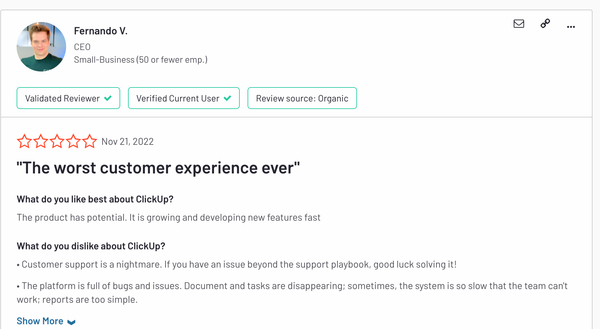
Dive into customer reviews on third-party platforms to gain unfiltered insights into product strengths, weaknesses, and areas of improvement.
👉 Reviews provide direct feedback from users, highlighting what they love and what they believe needs improvement.
➕ Positive reviews can be leveraged in marketing materials, testimonials, and case studies to build trust with potential customers.
➖ Negative reviews offer a roadmap for product development, pinpointing areas that require attention.
Analyzing competitor reviews can reveal gaps in their offerings, providing opportunities to differentiate and position your product more favorably.
Platforms to consider include Trustpilot, G2 Crowd, Capterra, and industry-specific review sites.
→ What are customers complaining of?
→ What features do consumers love the most?
→ What objections can you address via your content?
#15 Shadow/listen to a prospective sales call
Gain direct insights into customer needs, objections, and feedback by actively listening to prospective sales calls.
✅ Firsthand exposure to the questions, concerns, and feedback of potential customers provides invaluable market understanding.
✅ Common objections or concerns raised during calls can be used to adjust sales strategies for future pitches.
✅ Understanding customer pain points and needs can lead to more personalized follow-ups, strengthening relationships and increasing conversion chances.
Coordinate with the sales team for suitable calls, ensure customer consent for an additional listener, actively listen without interrupting, and discuss insights post-call with the sales representative.
→ What problem can you solve for your target customers?
→ What are your customers’ day-to-day life’s primary and adjacent pain points?
→ Which concerns of potential buyers can you eliminate through your content?
#16 Sit on customer support for a day
You will get valuable insights from first source, go deep on your talk with your customers:
→ What are the most common use cases customers need help with?
→ What language do they use to express their problem?
→ Which FAQs can you answer via your content?
#17 Survey customers
Frequently surveying your customers is key. You will always learn more.
🔗 Use https://pmfsurvey.com/ from PMF Survey to get started.
Here are some possible questions (depending on what you’re trying to learn about your customers).
- How did you discover [X product/company]?
- How would you feel if you could no longer use X?
- What would you use as an alternative if X weren’t available?
- What’s the primary benefit you’ve experienced from X?
- Have you recommended X to anyone?
- What type of person do you think would benefit from X?
- How could we improve X to better meet customer needs?
Important customer Segments to get better insights:
- – Most active
- – Loyal users
- – Infrequent
- – High NPS score
- – High/Low MRR
- – Inactive users (signed up but never used it)
- – New customers
- – Churned customers
Did you know that a mere 5% increase in customer retention can boost profits by up to 95%? In the competitive world of SaaS, ensuring client satisfaction isn’t just a nicety—it’s a necessity. But how do you achieve that?
In this article, we delve deep into +18 proven strategies that have been meticulously researched and tested to skyrocket client satisfaction and drastically reduce churn. These aren’t just any strategies; these are growth tactics specifically tailored for Customer Support Specialists.
By the end of this read, you’ll have a comprehensive understanding of how to elevate your customer support game, ensuring that your clients remain loyal and satisfied. From harnessing the power of AI-driven support to understanding the nuances of empathetic communication, we’ve got you covered.
Expect insights on real-time support optimization, feedback loop creation, and much more. Let’s dive in!
#18 Understand why yours users stop using your SaaS
Prioritize understanding why users stop using your SaaS product or cancel their subscriptions
Key strategies to consider:
- ✅ Provide timely and personalized support responses.
- ✅ Offer proactive support by anticipating common user issues.
- ✅ Use feedback loops to understand user pain points and address them.
- ✅ Train your support team to empathize with users and offer solutions tailored to their needs.
- ✅ Consider implementing a dedicated customer success team to guide users through onboarding and regular usage.
- ✅ Regularly review and analyze support tickets to identify trends and areas for product improvement.
Top reasons for customer churn:
- Frequency of Usage — what is the frequency of product usage?
- Breadth of Usage — are customers using your full breadth of solutions?
- NPS Results — how happy are your customers?
- Changes to Key Staff — what happens when a product evangelist leaves the company?
- Tool Limits — are customers hitting their usage limits?
- Engagement — are there long delays in product engagement?
To fuel your quest for growth, we’re excited to share this exclusive resource: “30 Days of Growth“. Take full advantage of this bundle for an unbounded growth journey!🎯
